Back Top 10 things to see and do in the region of Picos de Europa
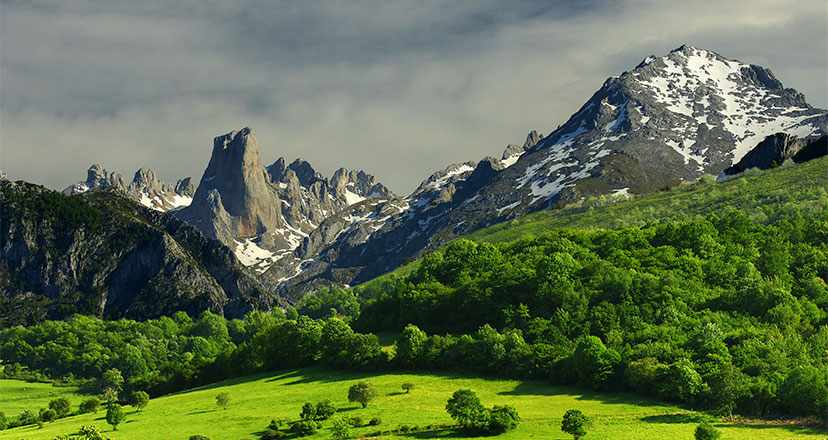
Top 10 things to see and do in the region of Picos de Europa
Do you know this region? There are many things to see in Picos de Europa, offering natural, cultural, gastronomic, ethnographic and human attractions.
The Picos de Europa Region is one of those places where there's never a dull moment. There are many diverse things to see in Picos de Europa, and you'll be able to combine scenery, nature, culture, gastronomy, and most rewarding experiences. And of course, have a wonderful time in a Biosphere Reserve like the Picos de Europa National Park.
We suggest the 10 best things to see in Picos de Europa!
Dozens of villages, a city that was once the capital of a kingdom, routes, viewpoints, mountain huts and shepherds, cheese factories, museums, dreamlike landscapes... All of this and much more in the Picos de Europa Region.
A visit to Cangas de Onís, the first capital of the Kingdom of Asturias
There are many beauties to see in Picos de Europa, and one of them is the town of Cangues d'Onís/Cangas de Onís. The motto on its coat of arms describes it as “Mínima Urbium, Máxima Sedium”, which means “the smallest of cities, the greatest of capitals,” and this is because the small village of Canicas (the name of Cangas in the Middle Ages) played a significant role in the origin of the Kingdom of Asturias, serving as its first capital. And indeed, it still preserves the historical imprint of the important events it was part of.
Undoubtedly, one of the traces from that era can be seen in the Church of the Holy Cross, located in the heart of Cangues d'Onís/Cangas de Onís, and built in the year 737 by King Favila, the son of King Pelayo. It's believed to be named after the Holy Cross because it housed the oak cross that Pelayo carried in the Battle of Cuadonga/Covadonga, which later became the Cross of Victory. It's also considered to be the first Christian temple built in Asturias and in Spain after the Islamic invasion. Additionally, the temple houses a dolmen, dating back to 3000 BC.
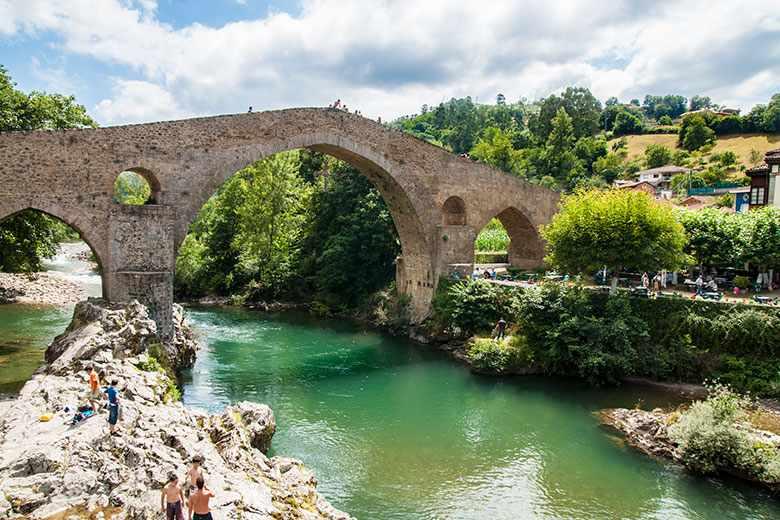
Another fragment of the past is the Roman Bridge, one of the most iconic and photographed spots in Asturias, known for its charm and beauty. Also referred to as the "big bridge" ("puentón" in Spanish), it's a medieval construction spanning the Sella River and linked to the Roman road that connected the present-day Lugo de Llanera with Santander. Its riverside setting is a salmon area.
However, Cangues d'Onís/Cangas de Onís is much more than just history. It boasts one of the oldest, most genuine, and lively Sunday markets in all of Asturias (it's highly recommended to visit the Market Square, especially on Sundays). While exploring, take a stroll along San Pelayo Street and the old area, concluding your walk where the statue of Pelayo and the Church of the Assumption stand.
Another enticing option is to visit a cider house or restaurant and savor the local cuisine, as well as explore the gastronomic and craft shops.
However, you mustn't leave without visiting the Casa Riera (located almost in front of the Roman Bridge), a splendid example of "indiana" architecture and the current tourist office. Here, you'll also find an exhibition about the local culture, and in its surroundings, a delightful park and pathway to enjoy the Güeña River, which joins the Sella River in this town.
Covadonga y su Santuario
The first thing you encounter upon arriving at Cuadonga/Covadonga is the Holy Cave - known as "Cova Dominica" or "Cave of the Lady" - a place of worship and pilgrimage where the Virgin of Covadonga is located, emanating peace and tranquility. Situated within a natural grotto, at the foothills of Mount Auseva, its setting amidst mountains and vegetation is spectacular, and it is believed to have been a hermitage carved into the rock during the time of King Pelayo.
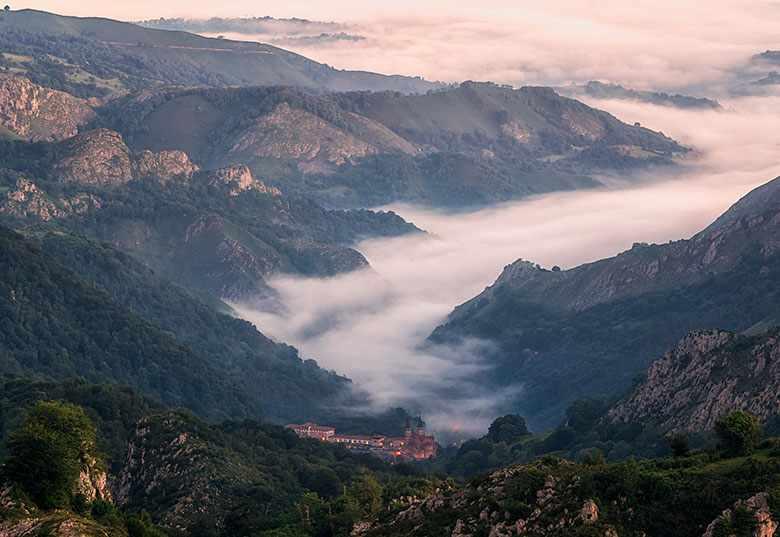
Within the cave rest the remains of D. Pelayo, the first king of the Asturian monarchy, and his son-in-law Alfonso I.
Right next to the cave stands the Renaissance San Fernando Collegiate Church, erected on the original monastic settlement dating back to the 12th century, hewn into the living rock of the Picos de Europa.
Another natural feature of this grotto is that beneath it lies a cavity through which, during rainy or thawing periods, an impressive waterfall known as the Chorrón del Río Mestas pours. This waterfall feeds into the famous pozón, a pool of crystal-clear waters, where the traditional ritual involves tossing a coin and making a wish.
On the edge of the 'pozón' lies the legendary Fuente de los Siete Caños (Fountain of the Seven Spouts), to which popular lore attributes magical powers, claiming that "the Virgin of Covadonga has a very clear fountain. The girl who drinks from it will get married within a year."
Among the many things to see in Picos de Europa is the Basilica of Cuadonga/Covadonga, a "cathedral" amidst nature that has been a historical and spiritual symbol for over a century. Inside, the altar, choir stalls, organ, and crypt are highlights. Perched on the Cueto hill - an elevation opposite Mount Auseva - from its esplanade, you'll enjoy privileged views of the Holy Cave, Mount Priena, the ascent to the Lakes, the Prince's Forest, and the entire surrounding natural landscape.
Additionally, don't miss the Museum of Cuadonga/Covadonga, located in what was the former Hotel Favila. Ascend the stairs to the famous Campanona, a unique piece that was awarded at the 1900 Paris Universal Exhibition, offering a beautiful view of the Basilica.
The Lakes, a classic of nature tourism
The Lakes of Covadonga, located about 12 kilometers from the Sanctuary, are a wonder of the world. Travelers from all around the globe are captivated by their landscape and the atmosphere created by their ecosystem.
The famous lakes are two: La Ercina, with the summit of Peña Santa de Enol reaching towards the sky, adorned with its perpetual snow caps. Meanwhile, you'll hear the bells of Asturian mountain cows, creating the most beautiful open-air concert you've ever heard. And then there's El Enol, with its meadow, shelter, chapel, or "porra" (a local term), knowing that beneath its waters lies a replica of the Virgin of Covadonga, brought to the surface by divers every 8th of September.
Additionally, there's a seasonal lake called El Bricial, which you can reach via the shepherd paths that lead from the meadows of La Ercina or Enol. El Bricial lies at the base of the peak bearing the same name, and just opposite stands the beech forest of Mount Palomberu, another wooded wonder of the Picos de Europa National Park. The best time to see this unique "intermittent" lake is during spring, coinciding with the thaw. You'll find you can make a circular route, going through La Ercina and returning via Enol, or vice versa.
The Lakes of Covadonga, admired by travelers, captured by artists, studied by scientists, a goal and accomplishment for athletes, have been one of the most filmed places on the entire planet, especially due to serving as a finish line for stages of the Vuelta a España cycling race on several occasions.
As a shepherd's refuge and the birthplace of one of the world's finest cheeses, Gamonéu, the Lakes are a landmark for hikers, mountaineers, and nature enthusiasts.
Picu Urriellu, an international climbing icon
Among the most notable landmarks to see in Picos de Europa is the Picu Urriellu, also known as the Naranjo de Bulnes, an iconic peak in the Central Massif of the Picos de Europa. This peak is emblematic and distinctive for several reasons: It can only be reached by climbing, it was the last major European summit to be conquered by climbers, its ascent in winter is complex, and it marks the origin of Spanish mountaineering.
In the year 1904, Pedro Pidal and Gregorio Pérez "el cainejo" were the pioneers in conquering this summit, which would become a constant challenge for climbers and other outdoor adventurers throughout the 20th century and into the present 21st century, with the opening of new climbing routes and other sporting endeavors.
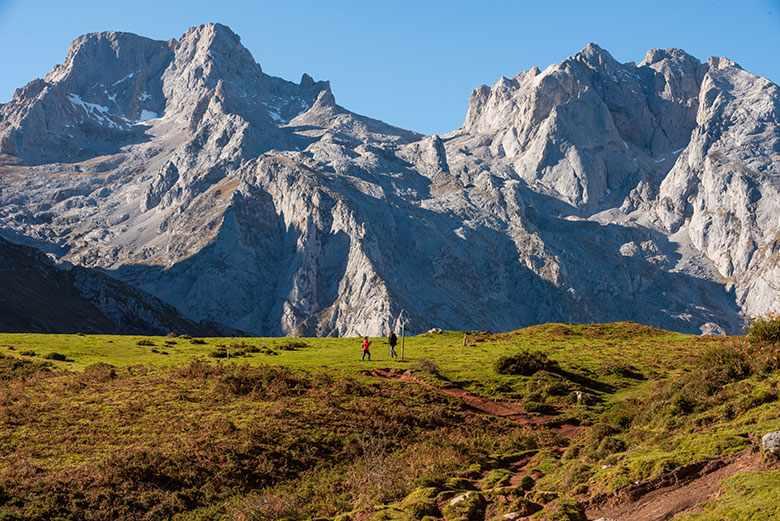
However, to enjoy its vastness and marvelous scenic surroundings, you don't need to climb if you're not inclined to do so. You can reach the base of this summit through an accessible route that starts from Pandébano (Cabrales), and in just a few hours (approximately three), you'll arrive at the Vega de Urriellu, where there's also a mountain hut with hospitality services.
A walk through the villages of Picos de Europa
The Picos de Europa and their surroundings, one of the most unique landscapes on the continent, blend the lushness of Atlantic vegetation with the rocky and limestone ecosystem of the Picos themselves. This combination creates dreamlike landscapes, with villages that appear as if taken from a fantastical tale.
These villages lend their names to renowned artisanal cheeses like Cabrales or Gamonéu. They are the dreams of mountaineers and adventurers; they are the settings for routes and pilgrimage paths. These villages offer incredible panoramic views of the summits and the most emblematic places in the Picos de Europa. In essence, they are villages that conceal artistic and spiritual treasures linked to the foundation of the first Christian kingdom on the Iberian Peninsula during the Middle Ages.
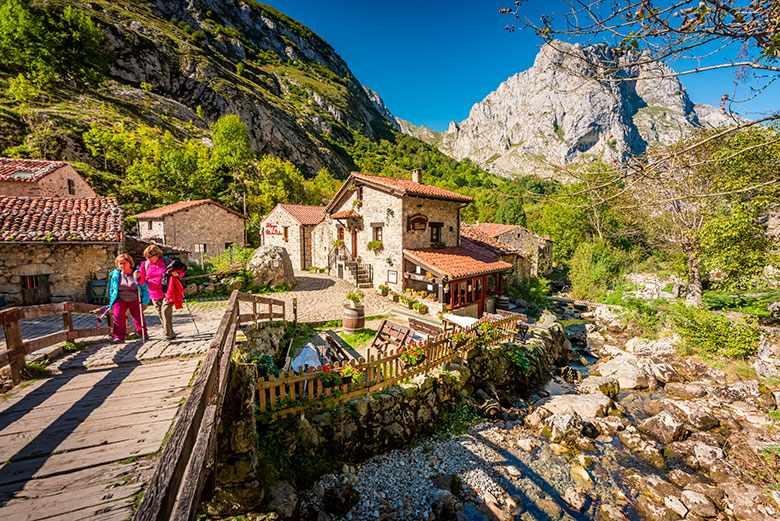
On a trip to the Picos de Europa Region, one of the villages you mustn't miss visiting is Bulnes. However, there are also many other villages where you'll discover unique sensations and landscapes.
Viewpoints with beautiful views of Picos de Europa
The Picos de Europa Region, due to its geographical and orographic characteristics, is a land of slopes and elevated places that offer sweeping views of summits, valleys, lakes, forests, and endless landscapes (as far as your sight and the day's visibility allow).
That's why the entire region is adorned with viewpoints that you can easily reach, requiring minimal effort.
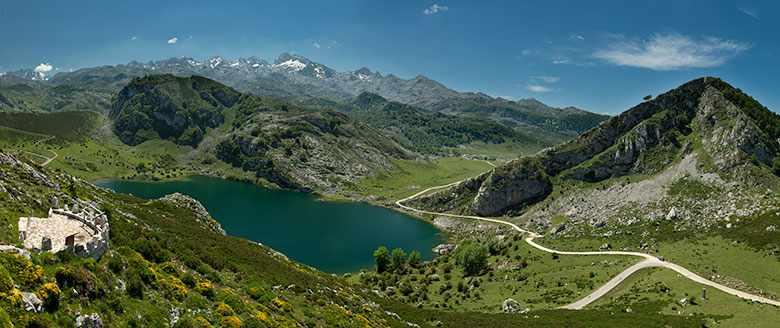
One of these viewpoints is the Mirador de la Princesa, the most recent one inaugurated in the Picos de Europa, specifically in 2018 - when the National Park celebrated its 100th anniversary. Located on Sohornín Peak, it offers beautiful views of the lake and some of the peaks of the Picos de Europa.
The world of the sheepfolds and the shepherds: an experience not to be missed
The mountain pastures (majadas) are highly characteristic places in the Picos de Europa and are closely linked to pastoral activity. They served as traditional locations where shepherds spent the summer months with their herds—primarily cattle—taking advantage of the pastures. During this time, they focused primarily on producing milk for making butter and artisanal cheeses.
As autumn arrives, the shepherds would bring the livestock down to the barns and to pastures closer to the villages in various valleys, where they would spend the entire winter.
One of the cheeses that best reflects these cycles of life is Gamonéu. The "del puertu" variety is produced during spring and summer in the mountain pastures, where the animals graze on high-altitude grasses. On the other hand, the "del valle" variety is produced year-round, with the animals grazing in lower areas closer to rural settlements.
Another highly renowned artisanal cheese from the Picos de Europa is Cabrales. Both Gamonéu and Cabrales have the DOP certification (Protected Designation of Origin).
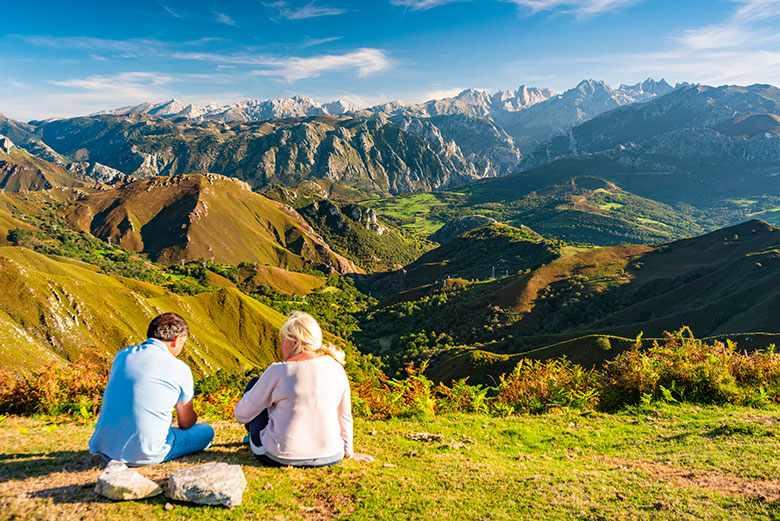
Well, the "majadas" are those enchanting places that you have to visit. There are still many in the Picos de Europa, most of them in the councils of Cangas de Onís and Onís. One of them is Soñín, where Gamonéu del Puertu is traditionally made.
So the cheeses of Picos de Europa are some of the best in the world, so don't miss out on tasting them and getting to know the culture of shepherding!
Mountain routes and active tourism activities for all levels and preferences.
The Picos de Europa Region, with its geographical and scenic characteristics, offers a plethora of hiking trails of various levels and for different preferences.
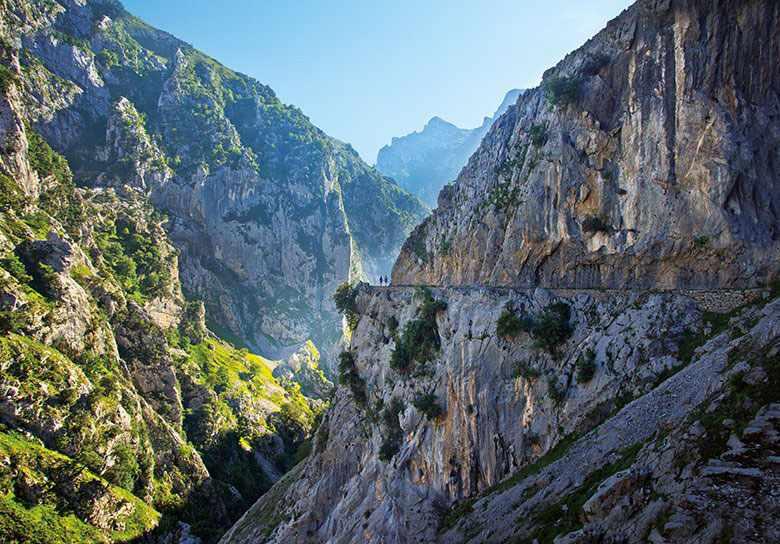
One of the most well-known and frequently traveled trails, especially during peak season, is the Ruta del Cares, a 12-kilometer (or 24-kilometer round trip) trail with minimal elevation gain that connects Poncebos and Caín (the latter located in the Leonese part of the Picos de Europa National Park). However, it's important to take the necessary precautions as you would for a mountain trail.
Other notable options include the route from the Lakes of Covadonga to Vega de Ario (where there's a refuge) or from the Lakes of Covadonga to Vegarredonda (where you'll also find a refuge).
Classics include the route to Mirador de Ordiales, the ascent to Bulnes via Canal del Texu, the route to Lake Ándara, and the Cabaña Verónica refuge route.
And, of course, in the Picos de Europa Region, you can also engage in adventure tourism activities like canoeing, rafting, canyoning, climbing, trail running, orienteering, snowshoeing, and ski mountaineering, among others.
A foray into the world of artisan cheese dairies
As you'll be captivated by the landscapes and history of the cheeses of the Picos de Europa, it's also interesting to visit a cheese factory. The cheese culture in this region is both ancient and extensive, with many varieties of artisanal cheeses. Some have DOP certifications like Cabrales or Gamonéu, others have IGP certifications like the Queso de los Beyos, and there are many others of high quality without certifications as well.
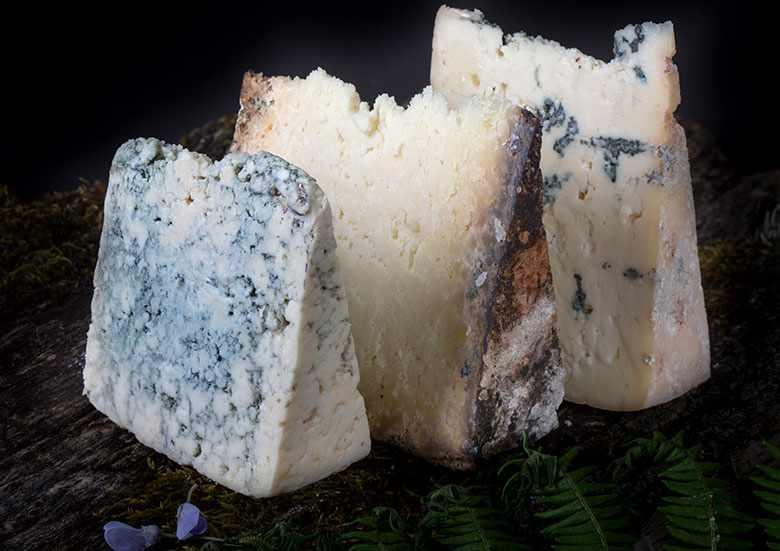
There are quite a few cheese factories that offer guided tours. Some of them include Vega de Ario in Onís; Demués, also in Onís; and Maín, El Cabriteru, and Vega de Tordín, all three located in the municipality of Cabrales.
Museums, Interpretation Centres and Visitor Centres to get to know the region in depth.
In addition to the visits and nature walks, the Picos de Europa Region is culturally rich and well-developed, making it worthwhile to explore some museums, interpretation centers, and visitor centers in the area.
One of these cultural spaces is the Cueva del Quesu (Cheese Cave) in Arenas de Cabrales.
The Picos de Europa Region will undoubtedly be a fascinating destination for you!
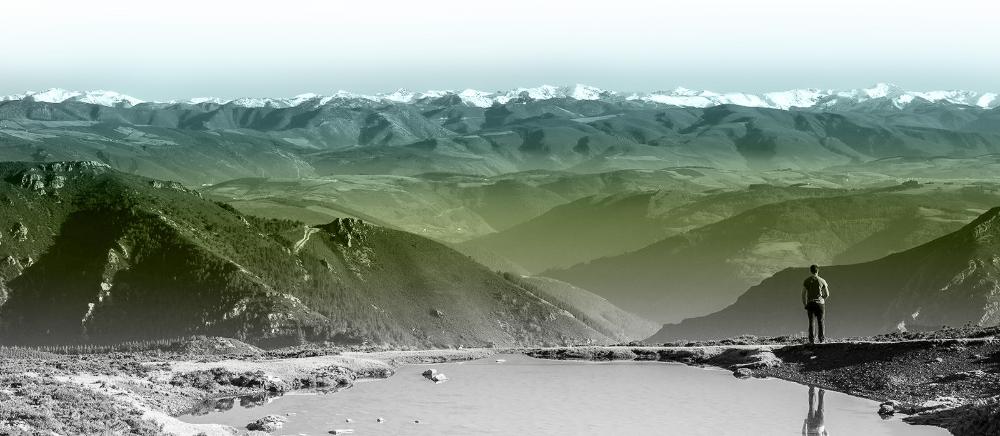
Subscribe to our newsletter and take advantage of offers, discounts, and news
Subscribe
